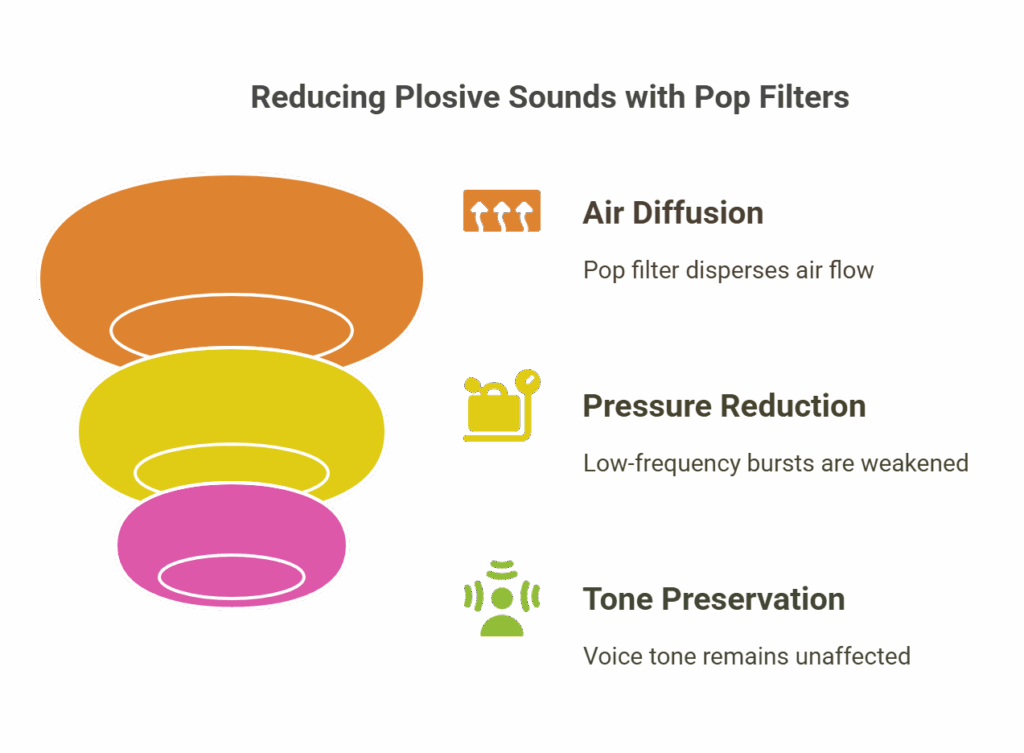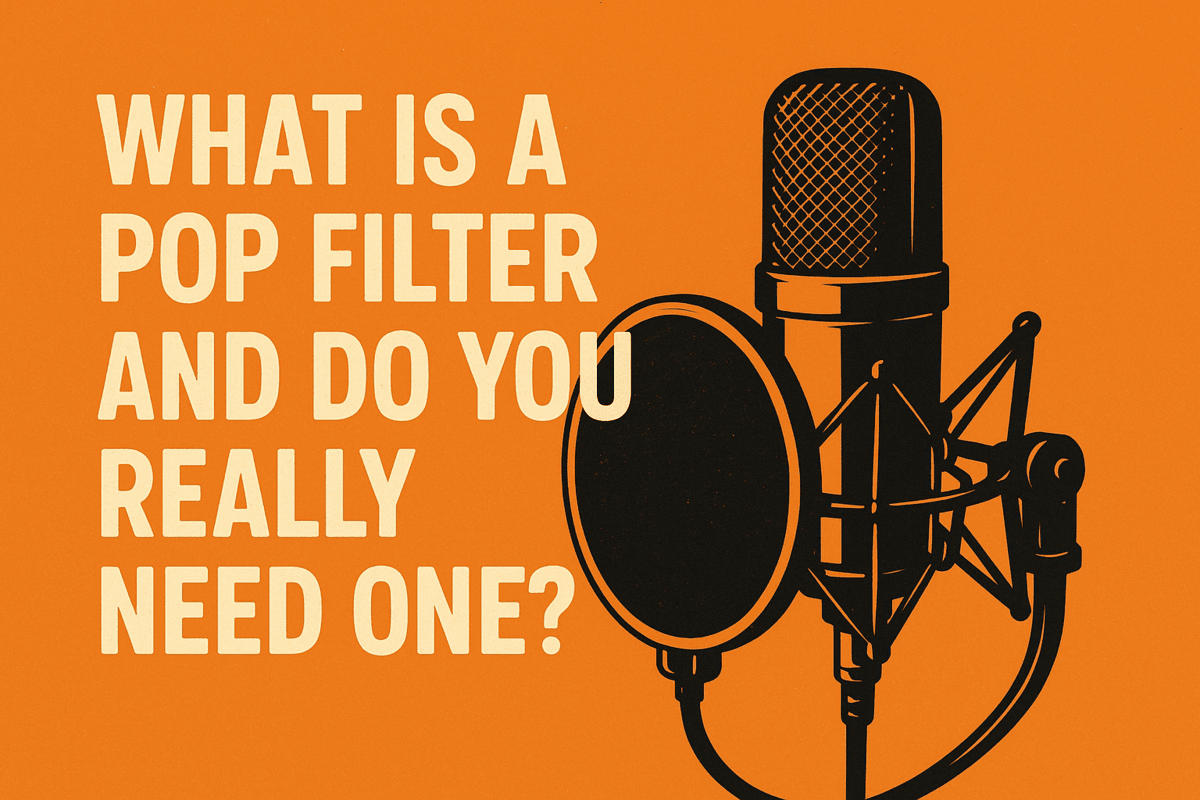If you’ve ever recorded your voice and heard those sudden booms or pops when saying words with “P” or “B” sounds, you’ve already met the enemy: plosives. That’s where a pop filter comes in.
A pop filter is a simple tool used in audio recording to tame those harsh blasts of air before they hit your microphone. Whether you’re just starting out or looking to clean up your vocal takes, understanding what a pop filter does—and whether you really need one—can make a noticeable difference.
Technical Basics

So how does this little mesh screen work?
Pop filters act like a physical barrier between your mouth and the mic, diffusing fast-moving air from speech before it smacks the microphone diaphragm. That burst of air from sounds like “P,” “T,” and “B” is what causes those distracting pops in your recordings.
On the technical side, plosive sounds are low-frequency bursts of pressure that most microphones, especially condenser mics, are sensitive to. Pop filters reduce the energy of these bursts without killing the tone of your voice.
As for materials? You’ll usually see pop filters made from nylon mesh or metal. Each has its quirks—nylon is softer and often cheaper, while metal is more durable and sometimes more transparent in terms of sound.
Types of Pop Filters
You’ve got a few choices here:
- Nylon Mesh Pop Filters: The classic round-screen style you’ll find in most beginner setups. Affordable, flexible, and easy to attach to a mic stand.
- Metal Mesh Pop Filters: A little more expensive, but built to last. They usually offer a thinner profile and a slightly more transparent sound.
- Foam Windscreens: These slip right over your mic and offer basic wind and plosive protection. Not quite as effective for studio vocals but useful in certain setups.
- DIY Alternatives: Yep, people still stretch pantyhose over a coat hanger and make their own. It works surprisingly well if you’re on a tight budget.
Benefits of Using a Pop Filter
Why bother with a pop filter at all? Here’s what you’re getting:
- Reduced Plosives: The biggest win. It smooths out your recordings and saves time in post-production.
- Protects Your Mic: Spit happens. A pop filter keeps moisture and gunk from building up on your mic capsule.
- Improved Audio Quality: Less popping and distortion means a more polished, professional sound.
- Industry Standard: If you’re planning to record vocals, voice-overs, or podcasts seriously, using a pop filter just becomes part of the process.
When to Use a Pop Filter
You don’t need one for every single recording situation—but in most vocal work, it’s a solid yes:
- Vocal Recording: Whether you’re singing or speaking, it helps keep the focus on your voice—not the pops.
- Podcasting: Especially important if you’re close to the mic and speaking casually. It keeps your voice smooth and listenable.
- Music Production: A pop filter is almost a default in studio vocal chains.
- Voice-Over Work: If you’re aiming for that clean, crisp commercial voice, a pop filter helps you get there without hours of editing.
Alternatives and Considerations
Not sold yet? There are a few other tricks you can try:
- Mic Placement: Angle the mic slightly off-axis from your mouth. It helps reduce direct bursts of air without needing a filter.
- Other Sound Reduction Methods: Acoustic treatment, vocal booths, and even EQ in post-production can help—but none replace stopping the pop at the source.
- Cost-Effectiveness: You can grab a solid pop filter for around $15–$30. For what it does, it’s one of the best bang-for-your-buck upgrades you can make to your setup.
Summary
So, do you really need a pop filter?
If you’re doing any kind of vocal work—especially with a condenser mic—it’s a strong yes. It’s affordable, easy to use, and makes a clear difference in your sound. But even if you’re just recording casually, it doesn’t hurt to have one around.
Bottom line: a pop filter is a small investment that keeps your recordings clean, your mic safe, and your workflow smoother.

Leave a Reply